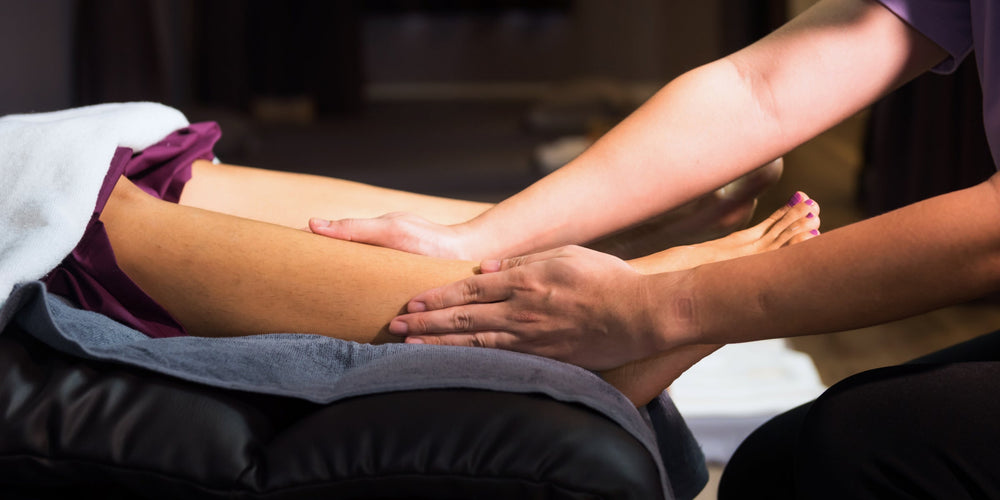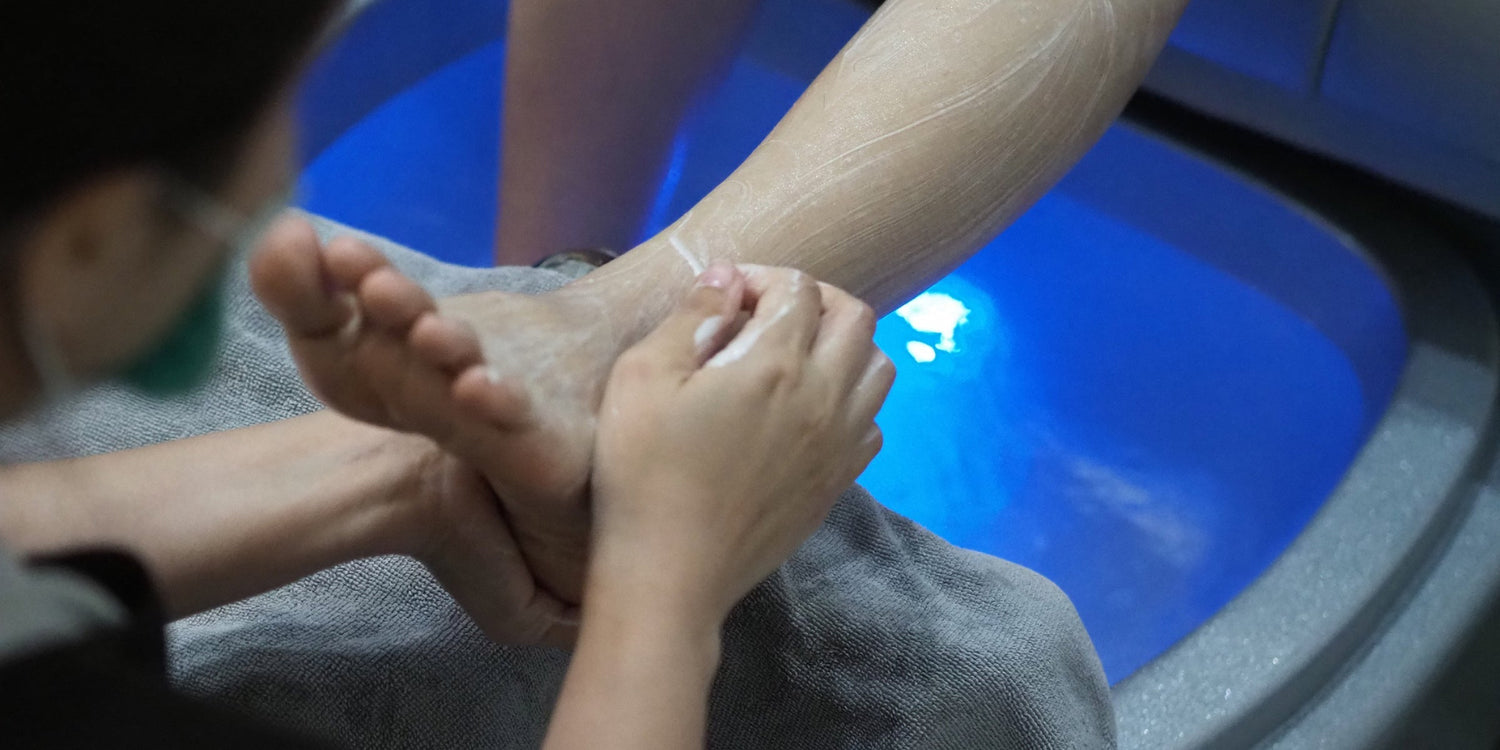Foot Reflexology for Headache Relief: The Surprising but Welcome Connection

Stay tuned to our latest news
Enter foot reflexology - an ancient healing practice that may hold the key to lasting headache relief. Though the connection between the feet and the head may seem surprising, foot reflexology has been used for centuries to treat a wide range of ailments, including stubborn headaches. By applying gentle pressure to specific reflex points on the feet, practitioners can potentially alleviate muscle tension, poor circulation, and other underlying factors that contribute to headaches.
Let’s find out how foot reflexology works as a natural therapy to find relief from even the most stubborn headaches. Whether you suffer from tension headaches, migraines, or sinus-related head pain, you may be amazed at how much of a difference this simple, non-invasive treatment can make. Discover the surprising but welcome connection between your feet and your head!
What Are Headaches?

Headaches are a common ailment experienced by people of all ages and can range in severity from mild discomfort to excruciating pain. They are characterized by aching or throbbing sensations in the head and can be accompanied by other symptoms such as nausea, sensitivity to light or sound, or even dizziness.
Headaches can be caused by a variety of factors, including tension, stress, dehydration, sinus congestion, or even certain medical conditions. They can significantly impact a person's quality of life, hindering their ability to concentrate, work, or engage in daily activities.
Types of Headaches
There are several types of headaches that individuals commonly experience, each with its own causes and characteristics. The four most common types of headaches are migraines, tension-type headaches, cluster headaches, and sinus headaches.
Migraines are known for their intense, throbbing pain, often accompanied by nausea, sensitivity to light and sound, and visual disturbances. They are caused by changes in brain chemicals, blood flow, and nerve cell activity. Migraines affect approximately 20.7% in women and 9.7% in men globally, and women are three times more likely to experience them than men.
Tension-type headaches are the most prevalent and often described as a constant, dull pain or pressure around the head. This type of headache is commonly caused by stress, anxiety, poor posture, or muscle tension. Tension-type headaches affect about 80% of individuals at some point in their lives.
Cluster headaches are characterized by severe, burning or piercing pain, usually localized around the eye or temple. They occur in clusters or cyclical patterns, with intense headache attacks lasting from 15 minutes to three hours. The exact cause of cluster headaches is unknown, but there may be a genetic predisposition. Cluster headaches are relatively rare, affecting approximately 0.1% of the population.
Sinus headaches are associated with sinus infections or allergies. The pain is generally felt in the forehead, cheeks, or around the eyes. Sinus headaches occur when the sinuses become inflamed, leading to increased pressure and pain. They are often accompanied by nasal congestion and discharge.
How Common Are Headaches?
Headaches are a common ailment experienced by people worldwide, with primary headaches being the most prevalent. Primary headaches are not caused by an underlying medical condition but occur independently. The most common primary headaches include tension-type headaches, migraines, and cluster headaches.
Tension-type headaches are the most prevalent primary headache, affecting a significant proportion of the global population. They can last anywhere from several minutes to several days and are not usually accompanied by additional symptoms such as nausea or sensitivity to light or sound.
Migraines are another prevalent type of primary headache, affecting many individuals. Migraines are often characterized by severe, pulsating pain usually localized to one side of the head. Migraines can last from a few hours to several days and may be triggered by various factors including hormonal changes, certain foods, or environmental stimuli.
The top five most common primary headaches, in order of prevalence, are tension-type headaches, migraines, cluster headaches, medication overuse headaches, and hemicrania continua. It is important to note that these prevalence rates may vary depending on the population studied and the methodology used in collecting the data.
Is There a Link Between Headaches and Foot Reflexology?

Foot reflexology is based on the principle that specific reflex points on the feet correspond to different organs, glands, and body parts, including the head and brain.
The idea behind foot reflexology is that applying pressure to these reflex points can help stimulate the body's natural healing processes and restore balance and function in the corresponding area. When it comes to headaches, reflexologists believe that massaging certain points on the feet can help relieve muscle tension, improve blood circulation, and reduce inflammation - all of which are common contributors to headache pain.
Some of the key foot reflexology points that are thought to be linked to headaches include the big toe, the inside of the foot, the tips of the toes, and the solar plexus. Research has shown that foot reflexology can be an effective complementary treatment for various types of headaches, including migraines and tension-type headaches.
The mechanisms behind how foot reflexology works for headaches are not yet fully understood, but it's believed to involve the stimulation of the parasympathetic nervous system, the release of endorphins, and the improvement of blood and energy flow throughout the body. Overall, incorporating foot reflexology into your headache management routine may be a safe, natural, and beneficial option worth exploring.
What Is the Role of Foot Reflexology in Headache Relief?
In headaches, foot reflexology focuses on stimulating the reflex points connected to the head and the nervous system. By applying pressure to these reflex points, it is believed that the nervous system is stimulated, which can help alleviate headaches. This stimulation of the nervous system can also activate the body's natural pain relief mechanisms.
Additionally, foot reflexology is thought to open blocked energy pathways in the body, which may contribute to the occurrence of headaches. According to reflexology, when these energy pathways are blocked, it can lead to imbalances within the body. By applying pressure to the reflex points on the feet, these energy pathways are believed to be unblocked, allowing for the free flow of energy throughout the body.
Tension in the feet can also be connected to the occurrence of headaches. When the feet are tense and stressed, it can create imbalances in the body, potentially leading to headaches. By addressing the tension and stress in the feet through foot reflexology, it is believed that the occurrence of headaches can be reduced.
What Are the Benefits of Foot Reflexology for Headache Relief?
By applying pressure to these reflex points, foot reflexology stimulates the nervous system, which in turn opens up blocked energy pathways throughout the body. This can help to alleviate tension headaches, which are often caused by the build-up of stress and tension that impacts the feet and travels upward.
The nervous system is a complex network of signals and impulses that control various bodily functions, including pain perception. By stimulating specific reflex points on the feet, foot reflexology can promote the release of endorphins, which are natural pain-relieving substances produced by the body. This can provide relief from headaches and reduce their intensity and duration.
Blocked energy pathways, also known as meridians, are believed to disrupt the flow of vital energy, known as Qi, throughout the body. Foot reflexology helps to unblock these pathways, allowing Qi to flow freely and restore balance to the body. By addressing the root cause of headaches, foot reflexology offers long-term relief rather than just temporary symptomatic relief.
When Do I Need to See a Doctor About My Headache?

While foot reflexology can be an effective alternative solution to headache, there may be times when you need to see a doctor for a more effective treatment. However, there are certain criteria that indicate when it is necessary to seek medical attention.
One important criterion is sudden worsening pain. If your headache pain suddenly becomes more intense or severe than usual, it could be a sign of a more serious underlying health issue. In such cases, it is advisable to consult a doctor for evaluation and appropriate treatment.
Different headache symptoms can also be a reason to see a doctor. For example, if you typically experience tension headaches but suddenly start having migraines or cluster headaches, it is important to have this change assessed by a healthcare professional.
Specific accompanying symptoms are another criterion to consider. Certain symptoms that accompany a headache may signify a more serious condition. For instance, if you have a headache accompanied by a stiff neck, high fever, confusion, or difficulty speaking, it is vital to seek immediate medical attention as these symptoms may be indicative of a serious infection or neurological condition.
Takeaway
Headaches are a very common health issue affecting millions globally, with tension-type headaches and migraines being the most prevalent. While traditional treatments like pain medication can provide temporary relief, many are seeking more natural solutions.
Foot reflexology, an ancient healing practice, may offer a promising approach for lasting headache relief. By applying gentle pressure to specific reflex points on the feet, practitioners believe they can alleviate the underlying factors contributing to headaches, such as muscle tension, poor circulation, and blocked energy pathways.
Research suggests foot reflexology can be an effective complementary treatment for various types of headaches, potentially stimulating the nervous system, releasing endorphins, and improving blood and energy flow. However, if headaches suddenly worsen or are accompanied by concerning symptoms, it is important to consult a doctor for proper medical evaluation and treatment.
Overall, foot reflexology appears to be a safe, natural option worth exploring for those seeking long-term relief from even the most stubborn headaches. By understanding the connection between the feet and the head, individuals may find welcome respite from this common affliction.
Renpho Health Tips
-

Diabetic Foot Care at Home: 5 Simple Techniques for Optimal Foot Health
May 8, 2024
Read more >
-

Discovering Key Foot Reflexology Points for Holistic Wellness
April 22, 2024
Read more >
-

Step Lightly: The Top 5 Culprits Behind Leg and Foot Pain – And How to Step Away From the Ache
April 1, 2024
Read more >
-

A Guide to the Best Gift Ideas for Your Mom
May 11, 2023
Read more >
-

5 Exercises to Prepare Your Feet for Hiking
May 8, 2023
Read more >



